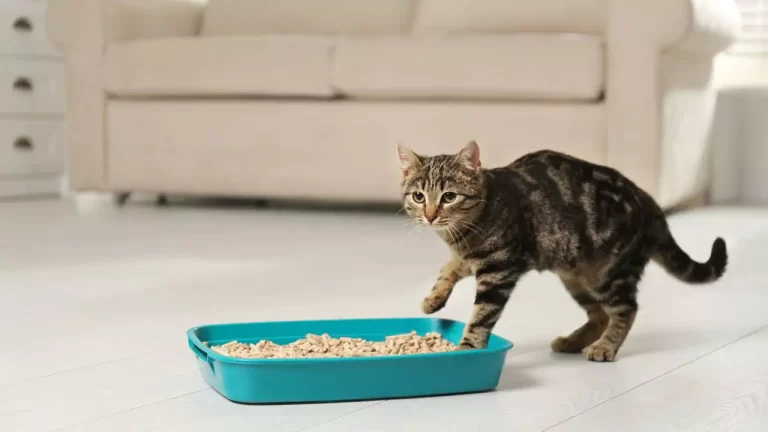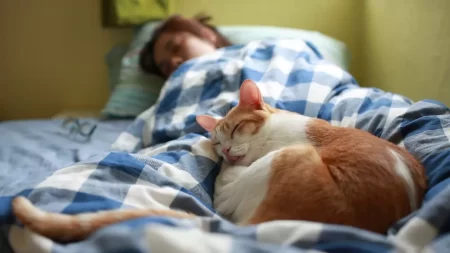If you live in an apartment with a cat, you know how important it is to keep the litter box clean and odor-free. But cleaning a litter box can be a messy and unpleasant task, especially if you don’t have much space or ventilation.
How can you clean your litter box in an apartment without making a mess? Here are some tips and steps to follow.
Supplies for Cleaning a Litter Box
Before you start cleaning your litter box, make sure you have the following supplies ready:
- Litter box: This is the container where your cat does its business. It should be large enough for your cat to comfortably fit and turn around, but not too big that it takes up too much space in your apartment.
- Warm water: You will need warm water to rinse and wash the litter box. You can use tap water or boil some water in a kettle or pot.
- Dish soap: You will need dish soap to sanitize and deodorize the litter box. You can use any mild dish soap that is safe for your cat. Avoid using bleach, ammonia, or other harsh chemicals that can harm your cat or damage the litter box.
- Disposable wipes: You will need disposable wipes to wipe down the litter box and the surrounding area. You can use any kind of wipes that are suitable for cleaning surfaces, such as baby wipes, disinfecting wipes, or paper towels.
- Sponge or cloth: You will need a sponge or cloth to scrub the litter box. You can use any sponge or cloth that is soft and absorbent, such as a microfiber cloth, a dish sponge, or an old towel.
Step-by-Step Litter Box Cleaning Instructions
Once you have all the supplies ready, follow these steps to clean your litter box:
- Empty the litter box: The first step is to empty the litter box of all the used litter. You can use a scoop or a plastic bag to scoop out the clumps and solid waste. Dispose of them in a trash bin or flush them down the toilet if your litter is flushable. Make sure you remove all the waste from the litter box and don’t leave any behind.
- Clean the litter box: The next step is to clean the litter box with warm water and dish soap. You can either take the litter box to the bathroom or kitchen sink or use a bucket or tub to fill it with water. Rinse the litter box with warm water and then add some dish soap. Use a sponge or cloth to scrub the inside and outside of the litter box, paying attention to any stains or odors. Rinse the litter box again with warm water and make sure there is no soap residue left.
- Replace the litter: The final step is to replace the litter with fresh and clean litter. You can use any kind of litter that your cat prefers, such as clumping, non-clumping, crystal, or natural. Fill the litter box with enough litter to cover the bottom by about 2 inches (5 cm). Don’t overfill the litter box as it can make it harder for your cat to bury its waste and cause more mess.
- Maintain the litter box: To keep your litter box clean and odor-free, you should maintain it regularly. You should scoop out the waste at least once a day and change the entire litter at least once a week. You should also wash the litter box with warm water and dish soap at least once a month or more often if needed.
Tips for Cleaning a Litter Box in an Apartment
Cleaning a litter box in an apartment can be challenging, but there are some tips that can make it easier and less messy:
- Use disposable litter box liners: One way to make cleaning easier is to use disposable liners that fit inside your litter box. These liners are made of plastic or biodegradable material that can hold the litter and prevent it from sticking to the bottom of the box. When you need to change the litter, you can simply lift up the liner and throw it away with the used litter.
- Choose a litter that can be flushed down the toilet: Another way to make cleaning easier is to choose a litter that can be flushed down the toilet instead of thrown in the trash. This can save you time and hassle of carrying bags of waste to the dumpster or garbage chute. However, not all litters are flushable, so make sure you check the label before buying one. Also, don’t flush too much at once as it can clog your pipes or damage your plumbing system.
- Try disposable wipes: If you don’t have access to warm water or dish soap, you can try using disposable wipes to clean your litter box. These wipes are moistened with cleaning agents that can sanitize and deodorize your litter box without rinsing. You can use them to wipe down the inside and outside of your litter box as well as the surrounding area. However, don’t use wipes that contain alcohol, bleach, or other harsh chemicals that can irritate your cat’s skin or respiratory system.
- Use a wet sponge or cloth to clean: If you don’t have disposable wipes, you can use a wet sponge or cloth to clean your litter box. You can dampen the sponge or cloth with water or vinegar, which can help neutralize odors and kill bacteria. You can use them to scrub the litter box and then rinse it with water. However, don’t use vinegar on metal or plastic litter boxes as it can corrode or damage them.
- Invest in a self-sanitizing or flushing litter box: If you want to save time and effort, you can invest in a self-sanitizing or flushing litter box that can clean itself automatically. These litter boxes are designed to scoop out the waste and dispose of it in a sealed container or flush it down the toilet. They also have sensors and timers that can activate the cleaning cycle at regular intervals or when your cat leaves the box. However, these litter boxes can be expensive and require electricity and water connections.







